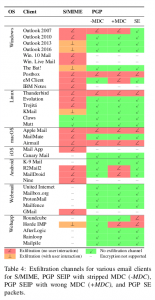 Samedi passé, le 13 juillet 2019, dans une opération coordonnée, les équipes Infrastructure et Interventions Critiques de CAcert ont mis à jour avec succès le système d’opération de notre infrastructure, localisée en Hollande. Le système repose désormais sur la version Buster de Debian, version déclarée stable la semaine passée par le projet Debian.
Samedi passé, le 13 juillet 2019, dans une opération coordonnée, les équipes Infrastructure et Interventions Critiques de CAcert ont mis à jour avec succès le système d’opération de notre infrastructure, localisée en Hollande. Le système repose désormais sur la version Buster de Debian, version déclarée stable la semaine passée par le projet Debian.
[this blog post is in French – for English, see here]
Déroulement de l’opération
Les équipes ont démarré leur travail ce matin vers 9:30 CEST et achevé toutes les mises à jour à 16:30 HAEC. Certaines de nos applications n’ont été rétablies qu’un peu plus tard. L’ensemble de nos systèmes est à présent revenu à son fonctionnement optimal.
Quelles améliorations en découlent?
La mise en service d’une version moderne du système d’exploitation, dont dépend toute notre infrastructure, garantit pour le futur un fonctionnement meilleur de nos applications:
- La technologie de containers LXC est ainsi passée de la version quelque peu anti-diluvienne 0.8.0 pre-release à la version 3.0.3, qui offre désormais une API bien définie, une sécurité améliorée, et qui sera beaucoup plus facile à manipuler pour les administrateurs de nos applications.
- Le pare-feu et la translation d’adresses devraient avoir été accélérés, par rapport à ce que parvenait à faire l’ancienne configuration iptables. Nous continuons à utiliser ferm comme wrapper, mais l’équipe Infrastructure de CAcert envisage déjà son remplacement par des règles nftables natives, qui offriront une analyse du trafic aussi sûre mais plus rapide.
- On peut retrouver sur notre liste de discussion d’autres détails de cette importante mise à jour.
Le leader de l’équipe Infrastructure de CAcert, JanDD, a fait part de sa grande satisfaction d’avoir vu s’accomplir enfin cette mise à niveau cruciale, offrant une solidité accrue de nos services aux membres de notre communauté. Dans un commentaire publié en fin d’après-midi, il remerciait chaleureusement Wytze, leader de l’équipe des Interventions Critiques, pour l’apport de sa compétence tout au long de la journée.
Les bénévoles dont sont formées ces deux équipes ont ainsi délivré un travail en continu pendant 7 heures et demi aujourd’hui samedi, pour pérenniser nos systèmes. Joignez-vous à nous pour les en remercier et marquez votre soutien par un don à l’association [x]. Les dons collectés sont exclusivement destinés à couvrir le coût de notre infrastructure (hébergement des serveurs sur site sécurisé et consommation électrique). “Par ma contribution financière, j’encourage le travail de Jan et Wytze; c’est ma façon de leur dire merci”.
Si vous observiez un dysfonctionnement consécutif à cette récente mise-à-jour, n’hésitez pas à nous en faire part sur https://bugs.cacert.org/ (suivre les onglets “Infrastructure” >
“Infrastructure hosts”).
Si vous cherchez à rejoindre l’une de nos équipes techniques, abonnez-vous à la liste de discussion de nos développeurs, ou contactez directement notre secrétaire.




